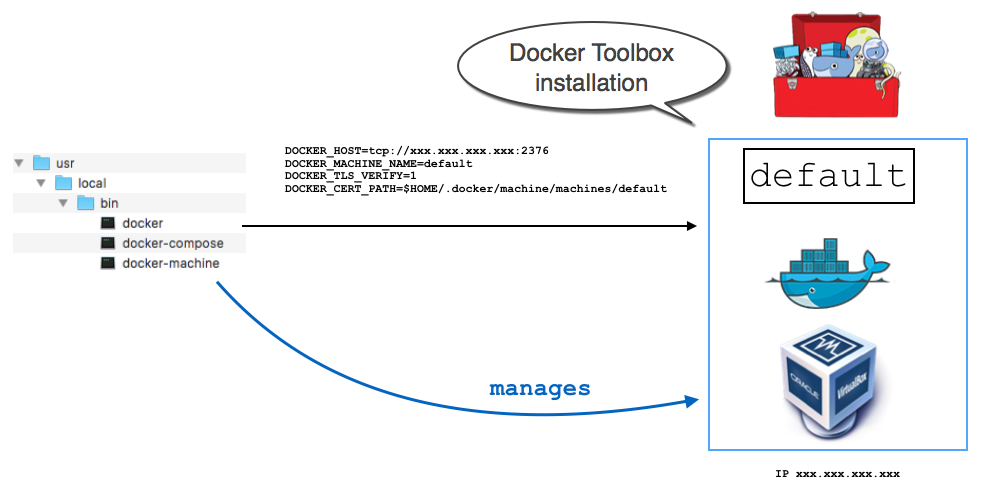


#Mac os docker ssl certificate install#
In development or testing environments where your team will access your Rancher server, create a self-signed certificate for use with your install so that your team can verify they’re connecting to your instance of Rancher.Ĭreate a self-signed certificate using OpenSSL or another method of your choice. Rancher/rancher:latest Option B: Bring Your Own Certificate, Self-signed Log into your Linux host, and then run the minimum installation command below.Īs of Rancher v2.5, privileged access is required. This installation option omits the hassle of generating a certificate yourself.
#Mac os docker ssl certificate verification#
If you are installing Rancher in a development or testing environment where identity verification isn’t a concern, install Rancher using the self-signed certificate that it generates. Option A: Default Rancher-generated Self-signed Certificate Option C: Bring Your Own Certificate, Signed by a Recognized CA.Option B: Bring Your Own Certificate, Self-signed.Option A: Default Rancher-generated Self-signed Certificate.Record all transactions with the Rancher API? See API Auditing.Complete an Air Gap Installation? See Air Gap: Docker Install.Configure custom CA root certificate to access your services? See Custom CA root certificate.Use a proxy? See HTTP Proxy Configuration.SSL secures all Rancher network communication, like when you login or interact with a cluster. Choose an SSL Option and Install Rancherįor security purposes, SSL (Secure Sockets Layer) is required when using Rancher. Provision a single Linux host according to our Requirements to launch your Rancher server. Make sure that your node fulfills the general installation requirements. Requirements for OS, Docker, Hardware, and Networking Because many features of Rancher run as deployments, and privileged mode is required to run containers within containers, you will need to install Rancher with the -privileged option. When the Rancher server is deployed in the Docker container, a local Kubernetes cluster is installed within the container for Rancher to use. For details, refer to the documentation on migrating Rancher to a new cluster.

The Rancher backup operator can be used to migrate Rancher from the single Docker container install to an installation on a high-availability Kubernetes cluster. The ability to migrate Rancher to a high-availability cluster depends on the Rancher version: See Docker Install with an External Load Balancer instead.Ī Docker installation of Rancher is recommended only for development and testing purposes. In this installation scenario, you’ll install Docker on a single Linux host, and then deploy Rancher on your host using a single Docker container. Here is guide for that one.Rancher can be installed by running a single Docker container. But it is just so damn complicated and you kinda need to re-learn it every time you return to it. Traefik is actuall business aimed and powerful and probably worth learning if you would need to manage lot of containers and change stuff dynamically on the fly. But I do know its rather trivial to setup as I already linked to the handholding guide. Only where you are the only person calling the shots you get to use it. The issue is that it is a small fish compared to nginx or traefik and your investment in learning it wont really be transferable. It is so damn easy with a very simple config file managing everything and with https working out of the box. I myself setup caddy for few businesses because that is what I use and it always worked reliably and I am most comfortable with it. So better way would be just learning how do it manually with nginx and not wonder if issue arrise if its some nginx stuff or proxy manager stuff Going with nginx proxy manager can ease the setup but bussiness enviroment usually calls for more reliable "Front end" for their infrastruce. In that regard I would say that you first comment was right, that just plain nginx is probably the answer.īut I dont really know that one, no idea how easy or difficult it is to setup. env "OVERWRITEHOST=" \īusiness environment usually calls on what is the most established and wide spread. v /mypersistentdatastore:/var/www/html \ Then, for each container, add these sort of environment variables to have the proxy set up lets encrypt and vhosting routing right to the container, for example with next cloud: volume /var/run/docker.sock:/var/run/docker.sock:ro \ volume $(pwd)/nf:/etc/nginx/conf.d/my_nf:ro \

volume /var/run/docker.sock:/tmp/docker.sock:ro \ volume $(pwd)/vhost:/etc/nginx/vhost.d \ First run docker nginx proxy and lets encrypt companion:


 0 kommentar(er)
0 kommentar(er)
